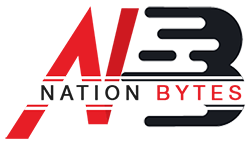Pakistan's Education Crisis: The Shocking State of Education in Pakistan
Pakistani educational system faces many contradictions, such as shortages of infrastructure, a shortage of teachers, outdated curricula, and limited accessibility. However, there are also positive developments and trends of improvement, which include governmental reforms, private education, integration of technology, and international partnerships.

Pakistan stands in a chronic education crisis in that 22.8 million children still remain out of school presently, ranging from age 5 to 16 years of age. It is the country with the world's second-highest number of out-of-school children. A lot of challenges still lie in efforts made to increase access to education, posing a challenge to the achievement of quality education for all in the country.
Challenges faced by the Education System in Pakistan:
Infrastructure
Indeed, the biggest challenge facing education in Pakistan is that of insufficient infrastructural facilities. Many schools, especially those in rural areas, are overcrowded, run-down, and devoid of basic facilities like clean water, electricity, and sanitation. This does not present an amenable learning environment and can, hence, not contribute positively to the outcomes of pupils.
Teacher Quality
This is the main reason qualified, capable teachers are scarce in many institutions, and those in the profession are not adequately prepared. Many of the teachers are not well qualified to implement the curricula of study for students; besides, some face meager salaries and uncomfortable work environments, and thus experience low morale and turnover.

Curriculum
The third major barrier to the demand for quality education in Pakistan schools is the out-of-date curriculum. The curriculum fails to introduce students to the requirements of this New World era since it focuses so much on rote learning & memorization having little emphasis on critical thinking, problem-solving, and practical skills.
The Corruption & Inefficiency
The corruption & inefficiency in the education sector. Corruption manifests itself in different forms including improper resource allocation, nepotism, and lack of accountability. nonefficient administration results in the delivery of quality education services.
A report by Transparency International mentioned corruption in the education sector, with over 40% of teachers accepting to having paid bribes to secure their jobs.
These are interlinked and mutually reinforcing ones. As long as one problem is not addressed, the others are not going to be addressed well either, and the overall quality of education is not likely to significantly improve. For Pakistan, this calls for an all-inclusive package of reforms that addresses all of them.
Read More: Surprising High-Paying Careers You Might Not Know About
The Positive Initiatives and The Opportunities
Despite the challenges facing education in Pakistan, there are also some promising initiatives and opportunities for improvement in the education system.
The Government Initiatives & Reforms
The government has taken steps to face the education crisis through different reforms, including the National Education Policy, among many others. The policy was meant to improve access to education, increase the quality of teaching and learning, and provide equity in education.
Universal Primary Education: Ensuring that all children have access to free and compulsory primary education.
Teacher Training: Improving the quality and quantity of teacher training programs.
The Curriculum Reform initiative: Modifying the curriculum to make it more relevant to the needs of the 21st century people.
The Infrastructure Development: Investing in the Renovation of Schools & Construction of them.
The Private Education Sector
Private institutions also played a keen role in the uplifting of the quality education in Pakistan. Private schools provide the best facilities, smaller classes, and much more qualified teachers we compared to the public sector schools. However, these private schools are unaffordable to many, which leads to hurdles in the access of education.
The Technology Integration Programs
Technology integration in learning & teaching has the potential to open access to teaching & learning. There is the possibility of extending information resources available to students, making learning specific, and enhancing assessment through the use of technology. But that requires proper infrastructure, teacher preparation, and acquisition of digital literacy skills for effective implementation.
International Partnerships
Cooperation with other countries can help Pakistan improve its education standards. International partnerships can provide access to expertise, funding, and best practices. Examples of international partnerships in education include:
The Bilateral agreements: cooperating with countries like the United States, the United Kingdom, and China.
Multilateral initiatives: getting participation in international organizations such as UNESCO and the World Bank.
Civil Society Engagement
It is while NGOs and community organizations have taken an important step in the improvement of the education crisis in Pakistan. Mostly, these types of organizations supplement education, teacher training, and community development programs. Furthermore, NGOs can act as a catalyst in terms of improving policy reforms and raising awareness about the need for education.








